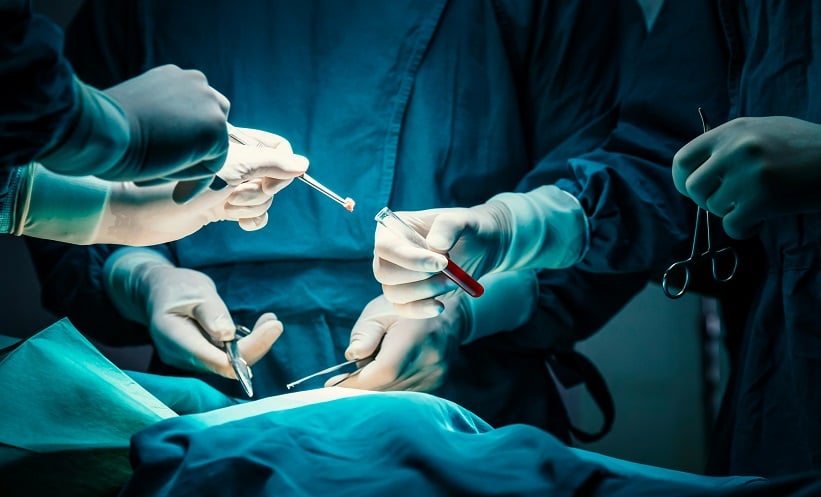A NEW research letter, from Connor J Kinslow and colleagues at Columbia University, New York, USA, highlights a rare but notable increased risk of lymphomas of the breast in women who undergo implant-based reconstruction following mastectomy for breast cancer.
Using the Surveillance, Epidemiology, and End Results (SEER) 17 database, the researchers identified 61043 women who underwent postmastectomy implant-based reconstruction for any breast tumour type, between January 2000 and December 2020, with at least 12 months of follow-up. The median age was 51 years, and participants were followed for a median of 86 months.
Over a cumulative 478,864 person-years of follow-up, the researchers observed 15 cases of non-Hodgkin lymphoma (NHL) in the breast. This equates to a fivefold increased risk compared to the general population, with a standardized incidence ratio (SIR) of 5.03 (95% confidence interval [CI]: 2.82–8.30). Of these cases, 7 were anaplastic large cell lymphoma (ALCL), a rare T-cell lymphoma strongly linked to breast implants, with an SIR of 41.6 (95% CI: 16.7–85.8). The remaining 8 cases included other lymphoma subtypes: 5 diffuse large B-cell lymphomas (SIR, 5.26; 95% CI, 1.71-12.3), 2 small lymphocytic lymphomas (SIR, 16.7; 95% CI, 2.02-60.2), and 1 peripheral T-cell lymphoma, not otherwise specified (SIR, 11.8; 95% CI, 0.30-65.7).
Five of the lymphomas occurred in the opposite breast from where the initial cancer occurred, known as the contralateral breast. Notably, the median time from breast implant to lymphoma occurrence reached 83 months (interquartile range [IQR] 46-115) for ALCL and 82.5 months (IQR 41-144) for other non-Hodgkin lymphoma subtypes.
An emphasised by the authors, these cancers still remain very rare, but this cohort study highlights the elevated risk for patients who have undergone immediate breast reconstruction following a mastectomy. The excess risks of diffuse large B-cell lymphoma, small lymphocytic lymphoma, and peripheral T-cell lymphoma, not otherwise specified, were 8.5, 3.9, and 1.9 cases per 1 000 000 persons per year, respectively.
Crucially, the authors did not identify an increased risk of NHL outside the breast or Hodgkin lymphoma of the breast. Moreover, the risk of NHL of the breast was not increased in women who had not undergone immediate breast reconstruction following mastectomy (SIR, 1.31; 95% CI, 0.91-1.83) or lumpectomy with or without radiotherapy (SIR, 1.11; 95% CI, 0.78-1.52).
Reference
Kinslow CJ et al. Lymphomas of the breast after postmastectomy implant-based breast reconstruction. JAMA Netw Open. 2025;8;(8):e2525820.







